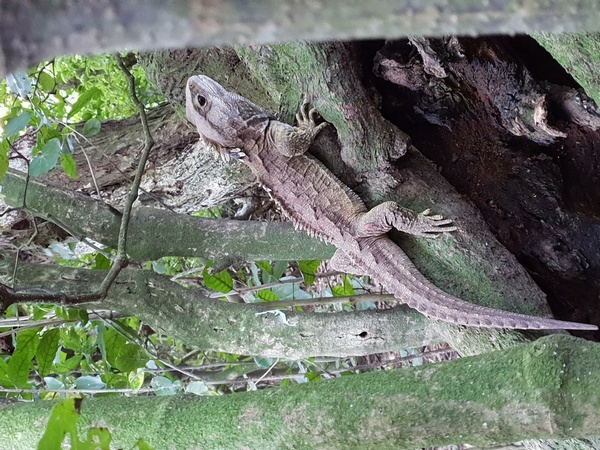Its genome shares features with those of mammals such as the platypus and echidna.
Some sequences of DNA move or jump location, they are even referred to as 'jumping genes', and those found in the tuatara are most similar to those found in platypus while others are more similar to those in lizards.

The genome of the contentious tuatara reveals a fascinating evolutionary secret. Image: Nicola Nelson
"The tuatara genome contained about 4% jumping genes that are common in reptiles, about 10% common in monotremes (platypus and echidna) and less than 1% common in placental mammals such as humans," said Professor David Adelson of the University of Adelaide's Department of Molecular and Biomedical Science.
With no close relatives, the position of tuatara on the tree of life has long been contentious. The research places tuatara firmly in the branch shared with lizards and snakes, but they appear to have split off and been their own species for around 250 million years - an enormous amount of time given primates only originated around 65 million years ago, and hominids, from which humans descend, originated approximately six million years ago.





Comments